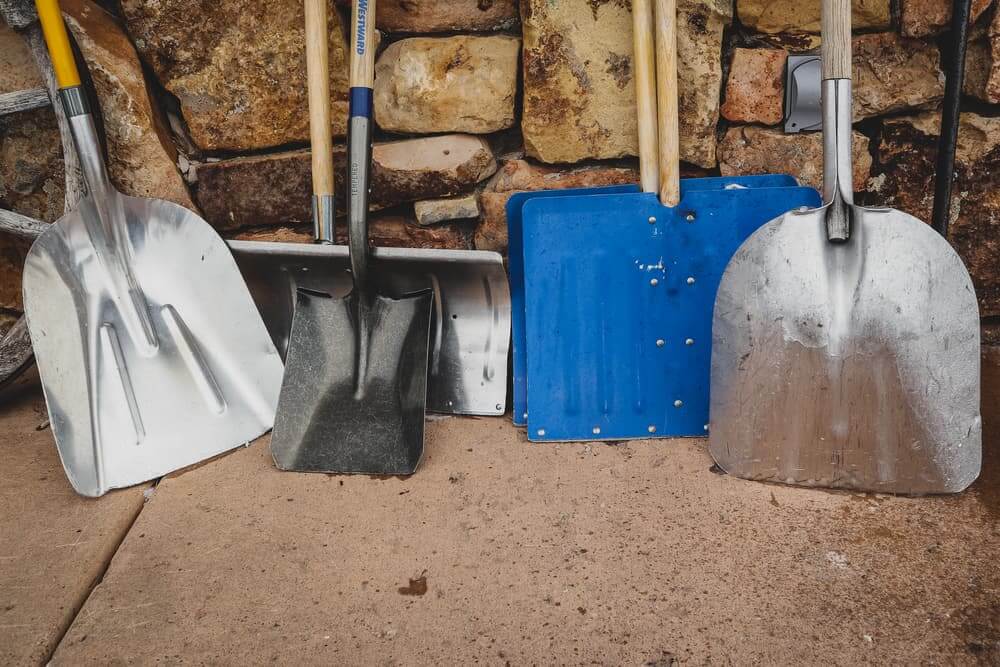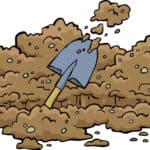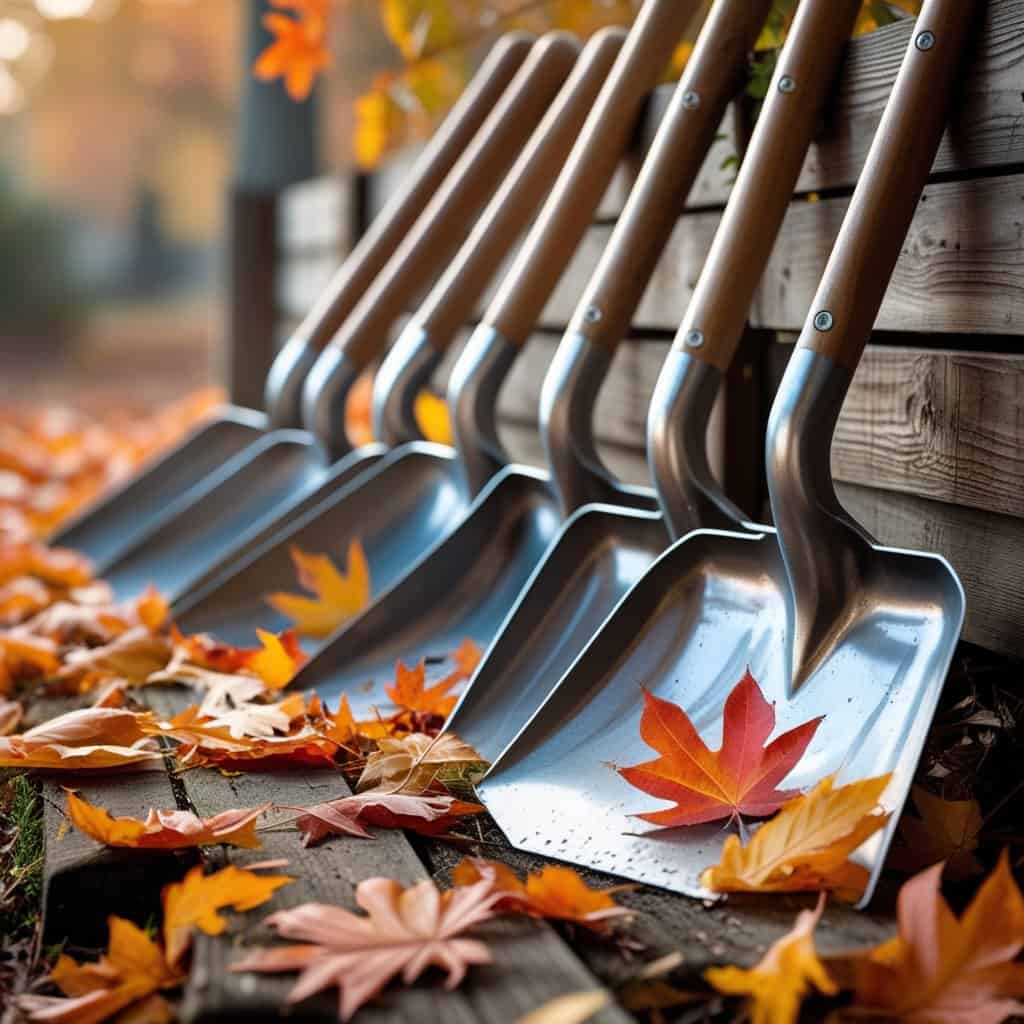Every time you step out into your yard to do some digging, you realize the importance of proper tools.
Using the correct kind of axe helps chop wood, and using the right type of shovel for digging completes the task faster while making sure you don’t get tired beforehand.
You might be wondering what kind of shovel you need to dig holes. Well, it really depends on what you are digging and for how deep.
If you want to create a hole in the ground that is less than 6 inches deep, then your basic garden shovel will do just fine.
If you want to dig something deeper, for instance, an old tree stump, then a spade would probably work better.
Different types of shovels have different uses!
To decrease your workload, you need to know the type of shovel to use depending on the outcome desired and the type of material you are digging.
If your in a hurry check out our reference guide to match your need and shovel quickly.
Table of Contents
Edging Shovel

It has very sharp flat edges and a smooth flat tip. These qualities let you make a clean, precise border and give your garden or lawn a neat appearance.
Measuring Shovel
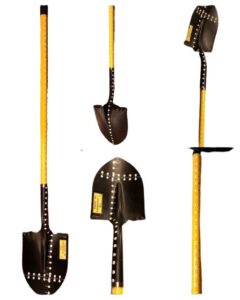
Measuring shovels are a relatively new shovel and have a precisely marked blade and shaft that allows accurate measurements of the hole’s length and depth.
These shovels help in the planning and placing holes to achieve perfect sizing for planting trees. https://themeasuringshovel.com/
Posthole Shovel

A posthole shovel is designed for one purpose, to dig post holes.
Its design is composed of rectangular blades and round corners.
It has two shovels in a cylindrical form and allows the creation of round holes in which poles and posts are placed.
Spoon Shovel
 These shovels are perfect for creating narrow, thin, and deep holes and for eliminating debris.
These shovels are perfect for creating narrow, thin, and deep holes and for eliminating debris.
A spoon shovel varies in length and is used to clear mud, water, and other filth from sewers, pipelines, and utility holes.
Pointed Digger Shovel
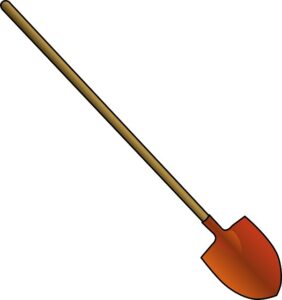
It would be best if you had this to dig substantial boulders of soil, huge chunks stuck together, or even rocky soil – this shovel does it all.
It is straightforward to identify this one.
It has a pointy tip and a long, steady, and wide footnote, which lets you put in all your weight to dig in easily through thick and dense soil.
Round Digger Shovel
 A round digger is your best friend when the soil is soft.
A round digger is your best friend when the soil is soft.
It lets you dig holes to plant in trees and plants, and, like the pointed digger shovel, its edges are upwards.
So, if you’re lucky, you might dig some rocks with it as well.
Root Shovel

These are very specific and special shovels with a typical elongated blade, which is triangular.
The tip, however, varies. It is sometimes flat, and other times pointed.
These shovels are very useful in cutting through tough roots of old, strong trees.
They often have serrated blades, making it easier to cut through the soil that has multiple roots.
Along with this, root shovels help create holes for new trees and plants so that they can fit in as well.
Scoop / Grain / Gravel Shovel
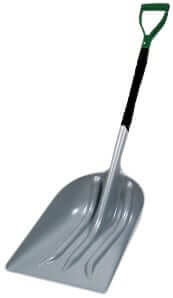
For tiny pieces of grain or anything small and difficult to handle, this “scoop” shovel, also known as a barn shovel, is used.
It has a scoop-shaped blade, as the name suggests.
This shape allows easy carrying of the tiny grains avoiding any spillover.
The grain shovel design is to carry all types of gravel.
Pea stone, Jersey Shore, Crushed Stone, and other types of gravel are conveniently lifted and transported.
These shovels have a spade edge, and the blade is spoon-shaped, which helps carry the rock, ensuring no stone is left behind.
Non-Sparking Shovel
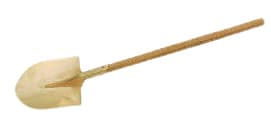
As the name suggests, the non-sparking shovel has a unique purpose.
Rescue workers and firefighters use this heavy-duty shovel in areas where hazardous material is present, such as gases or flammable substances.
The shovel is made from plastic, aluminum, or bronze, to remove impure, contaminated, and volatile substances without creating a spark.
Square Shovel
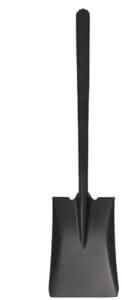
This shovel has a very distinct look.
It is flat from the top and lets the user do a variety of tasks with it.
However, it is handy when one is digging hard soil. It’s a terrible choice for other kinds of earth because of its flat bottom, but the same feature makes it a common choice in dry and less humid parts of the world where the soil is rough and dry.
It is a valuable tool for edging, trenching and moving small bushes.
Snow Shovel

The best-selling shovel in the market is the snow shovel.
It often varies in specifications, such as the curvature of the blade and the ridges or grooves present on it.
It does an essential job of shoveling away thick layers of snow.
Shovel Reference Guide
| Soil / Substrate | Purpose | Best Shovel |
|---|---|---|
| All soil types | Edging | Edging Shovel |
| Grain | Moving Grain | Scoop / Grain / Gravel Shovel |
| Gravel | Removing rock | Scoop / Grain / Gravel Shovel |
| Gravel | Carrying rock | Gravel Shovel |
| All soil types | Tree planting | Measuring Shovel |
| Hazardous material | Soil disposal | Non-Sparking Shovel |
| Rocky soil | Remove large boulders | Pointed Digger Shovel |
| Thick and dense soil | Remove soil hunks | Pointed Digger Shovel |
| Sand | Digging | Pointed Digger Shovel |
| All soil types | Post holes | Posthole Shovel |
| All soil types | Moving small tree | Root Shovel |
| All soil types | Moving small bush | Root Shovel |
| All soil types | Dividing plants and replanting | Root Shovel |
| Snow | Digging | Snow Shovel |
| All soil types | Clear mud/water | Spoon Shovel |
| All soil types | Narrow thin hole | Spoon Shovel |
| Hard dry soil | Edging | Square Shovel |
| Hard dry soil | Trenching | Square Shovel |
| Hard dry soil | Moving small bush | Square Shovel |
| Hard dry soil | Moving small tree | Square Shovel |
| Hard dry soil | Digging | Square Shovel |

